Image of the Day Archives

For older Image of the Day pictures, please visit the Image of the Day archives. Pictured: NGC 2467.
Let’s Stick Together
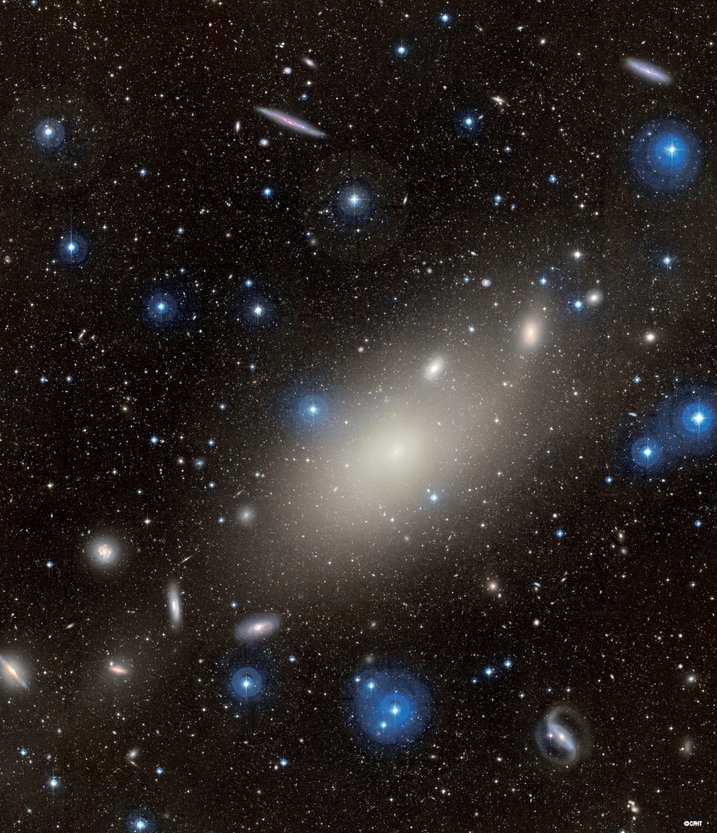
Wednesday, July 1, 2015: Galaxies bound to each other by gravity form galaxy clusters, the largest compact structures in the universe. The Virgo cluster of galaxies lies closest to us, some 50 million light-years away, and contains sub-structures such as this grouping of galaxies gravitating about a massive elliptical galaxy, NGC 4365. Image released June 2015.
— Tom Chao
Venus and Jupiter Are All Right Tonight
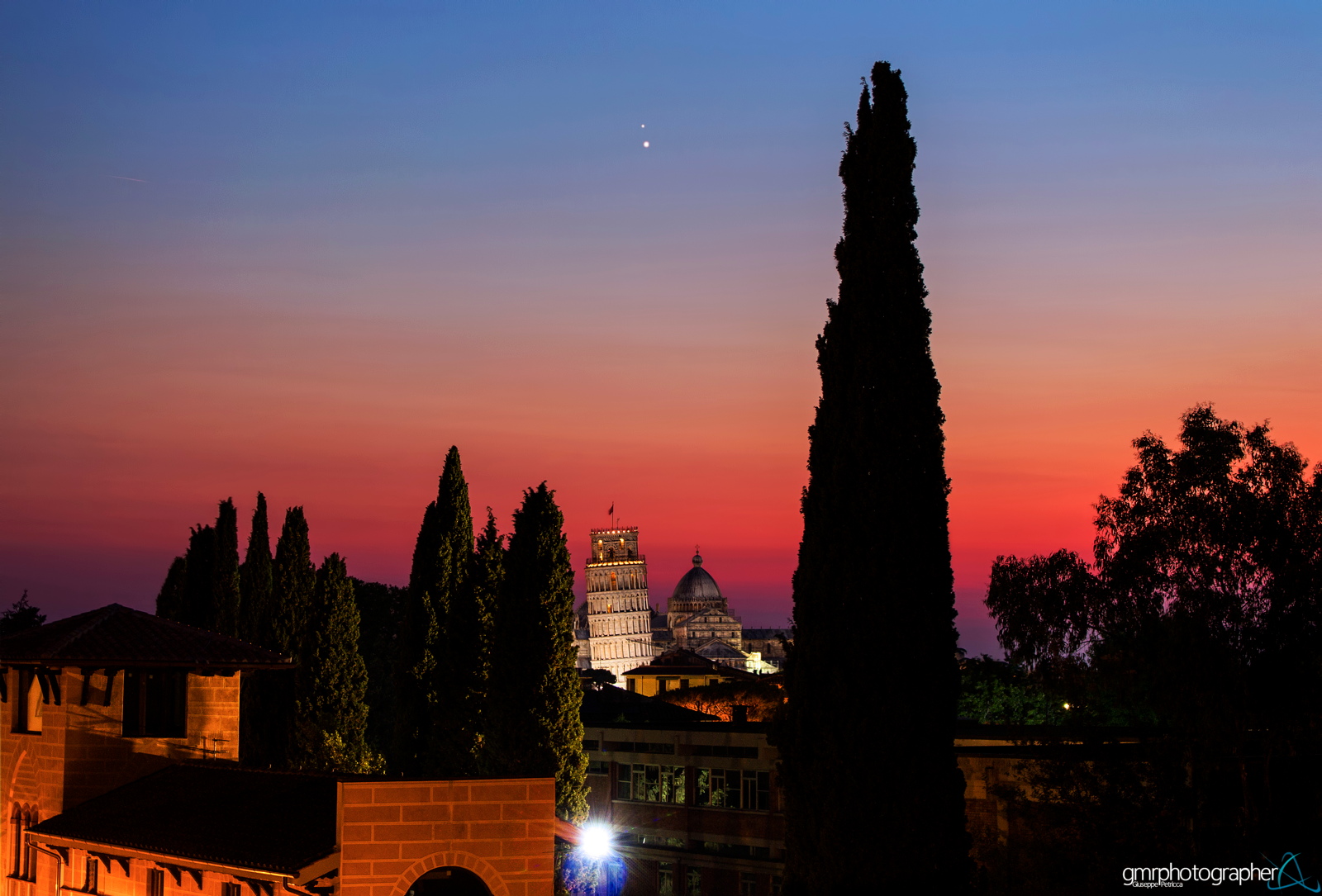
Thursday, July 2, 2015: Astrophotographer Giuseppe Petricca caught the conjunction of two planets in Italy on June 30, 2015. He writes in an email mesage to Space.com: “The sky was clear with only some haze that beautified the sunset colors, and the planets Venus and Jupiter in close conjunction were clearly visible, together over the Leaning Tower of Pisa! Simply an awesome sight!”
— Tom Chao
Fly the Flag High
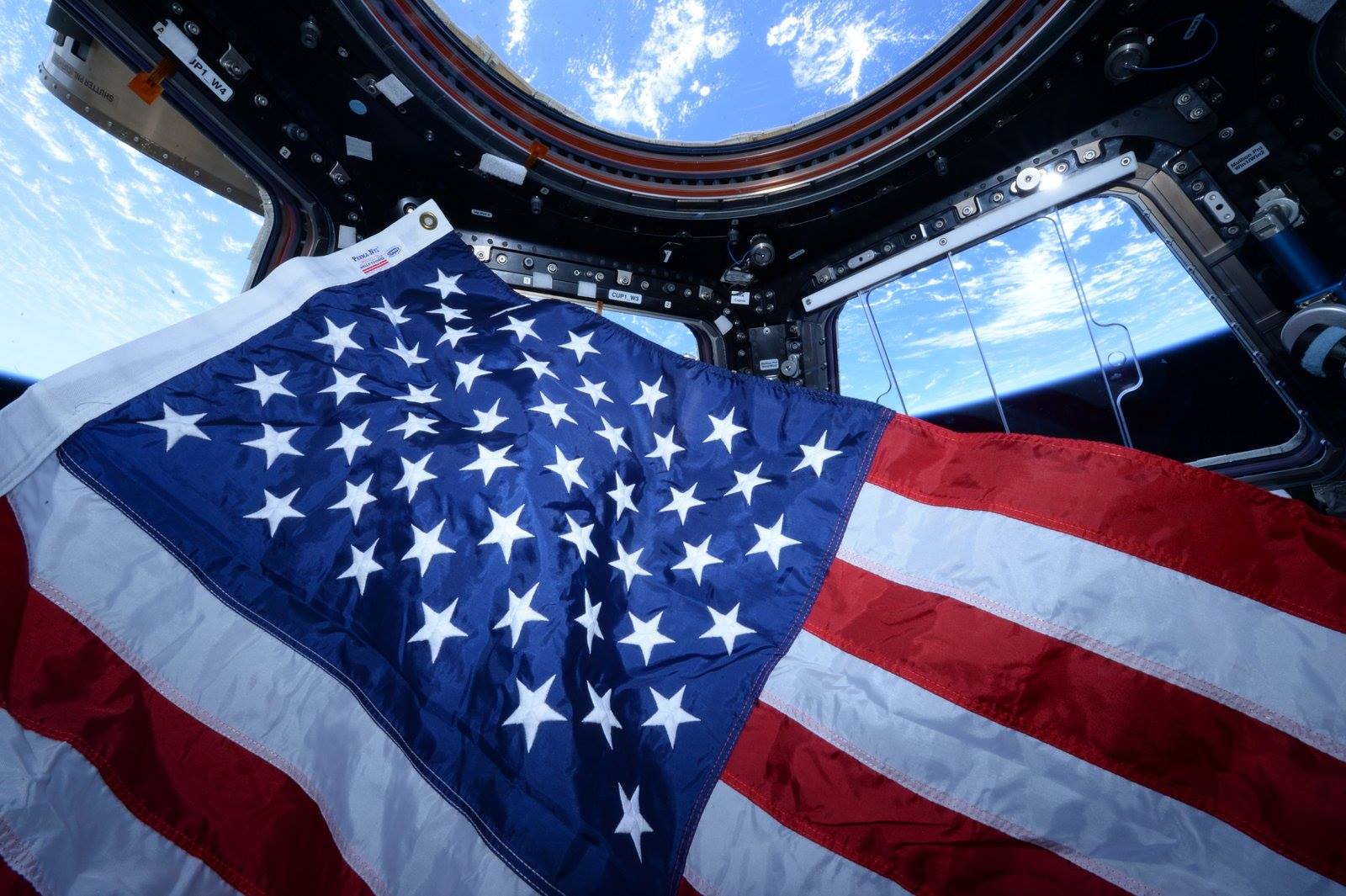
Friday, July 3, 2015: Happy Fourth of July from Space.com! The American flag flew in space in the cupola of the International Space Station to commemorate Flag Day, June 14, 2015. Photo taken by NASA astronaut Scott Kelly. He tweeted: "Stars and stripes from @Space_Station. Happy #NationalFlagDay! #YearInSpace"
— Tom Chao
New Wave
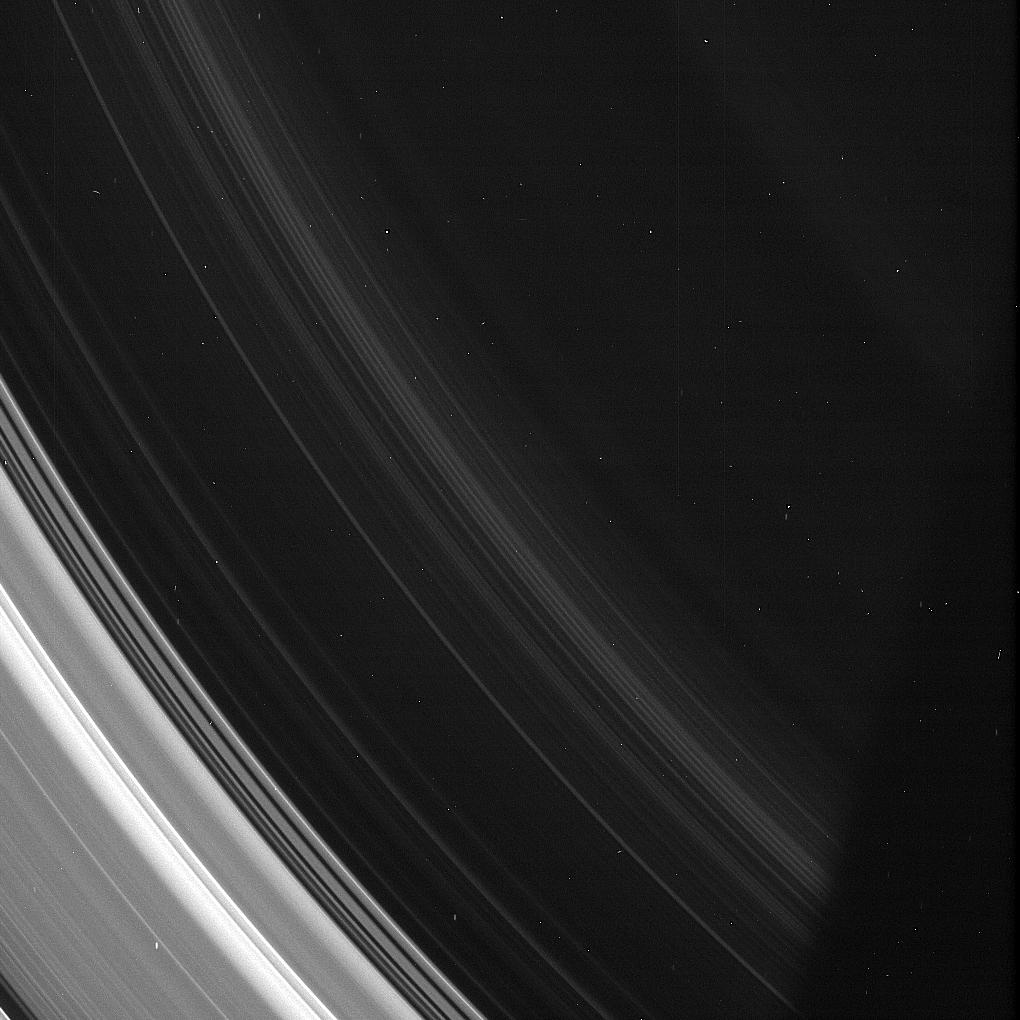
Monday, July 6, 2015: The thin, innermost D ring of Saturn shows spiral structures in this image obtained by Cassini spaecraft on on July 6, 2013. The wavy, or "vertically corrugated," spiral may have developed from a warp in the ring created in the early 1980s. (Bright specks and faint vertical streaks seen here are image artifacts.) Image released June 29, 2015.
— Tom Chao
Reflections of the Stars
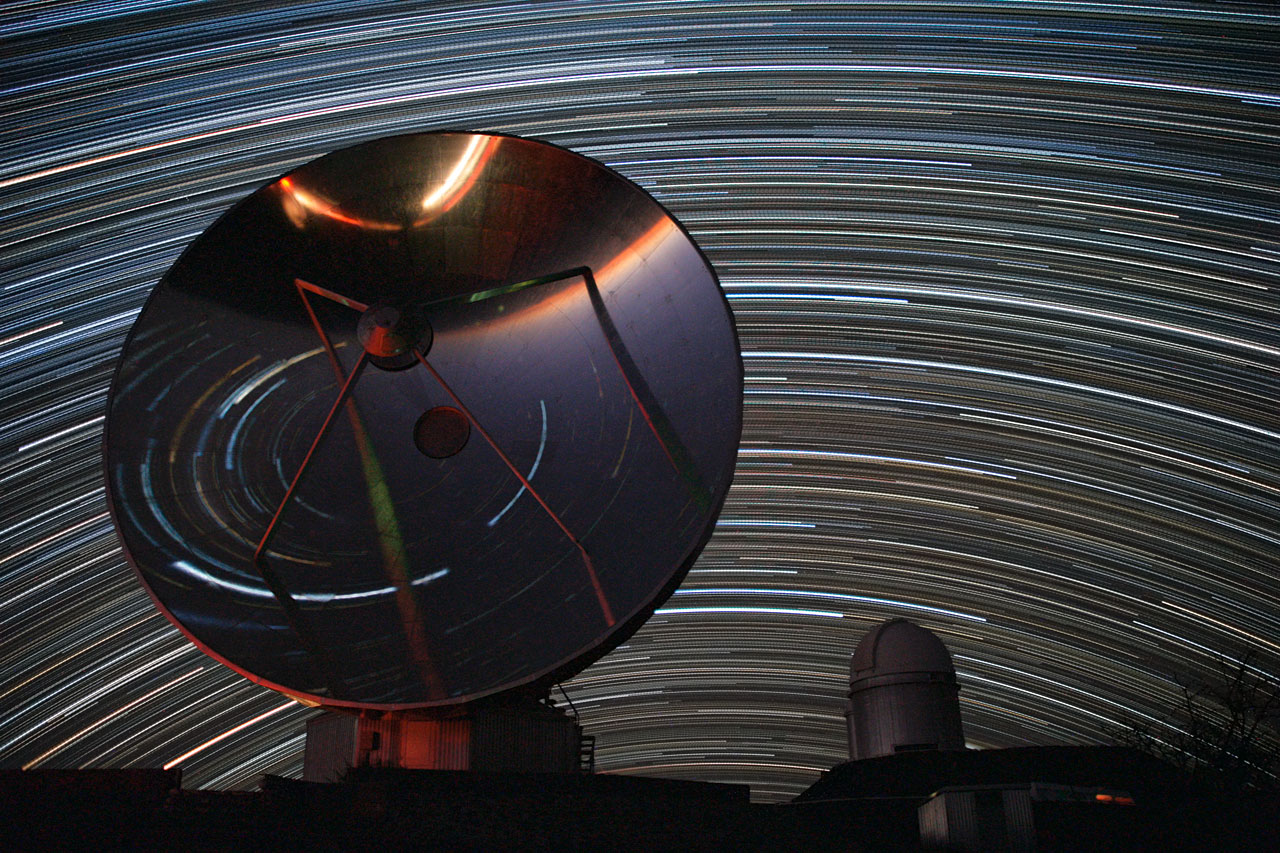
Tuesday, July 7, 2015: The Swedish–ESO Submillimeter Telescope stands at the left of this image, alongside the ESO 3.6-meter telescope on the right. Overhead, bright star trails appear to trail above the La Silla Observatory, in the outskirts of the Atacama Desert in Chile. This image combines 250 one-minute exposures, taken during a period of four hours. Reflections in the dish of the telescope include stars and also a car's red lights. Image released July 6, 2015.
— Tom Chao
Good Example
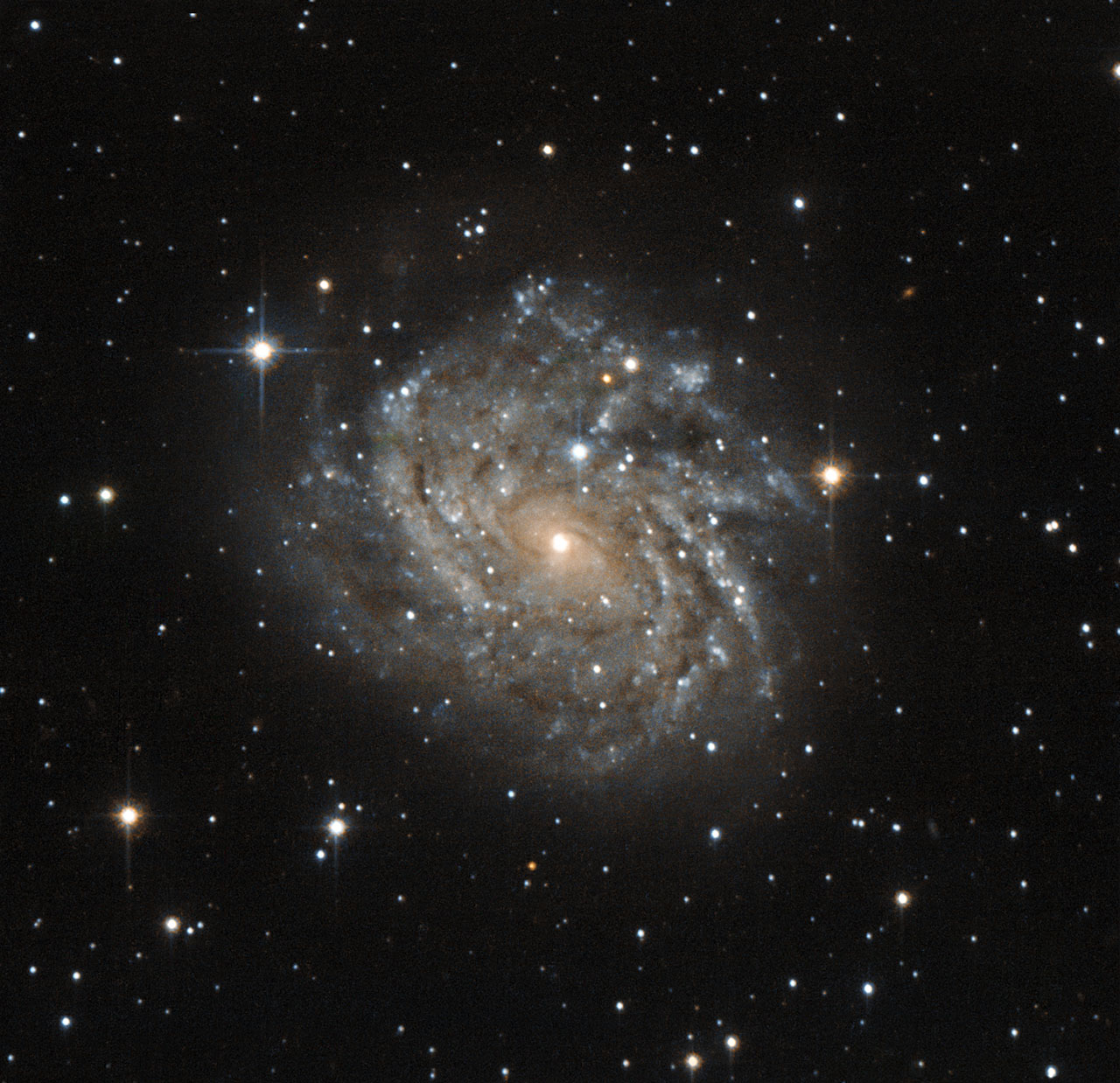
Wednesday, July 8, 2015: Galaxy J04542829-6625280 (LEDA 89996) represents a classic example of a spiral galaxy, similar to our own galaxy, the Milky Way. Seen face on, this image reveals the winding structure of the spiral arms of the disc-shaped galaxy, spotted with dark patches of dust and gas. These materials may eventually coalesce into new stars. Young stars in these regions glow bright and bluish. The galaxy lies within the constellation of Dorado (The Swordfish), very close to the Large Magellanic Cloud, a satellite galaxy of the Milky Way. Image released July 6, 2015.
— Tom Chao
Get the Space.com Newsletter
Breaking space news, the latest updates on rocket launches, skywatching events and more!
The Machman
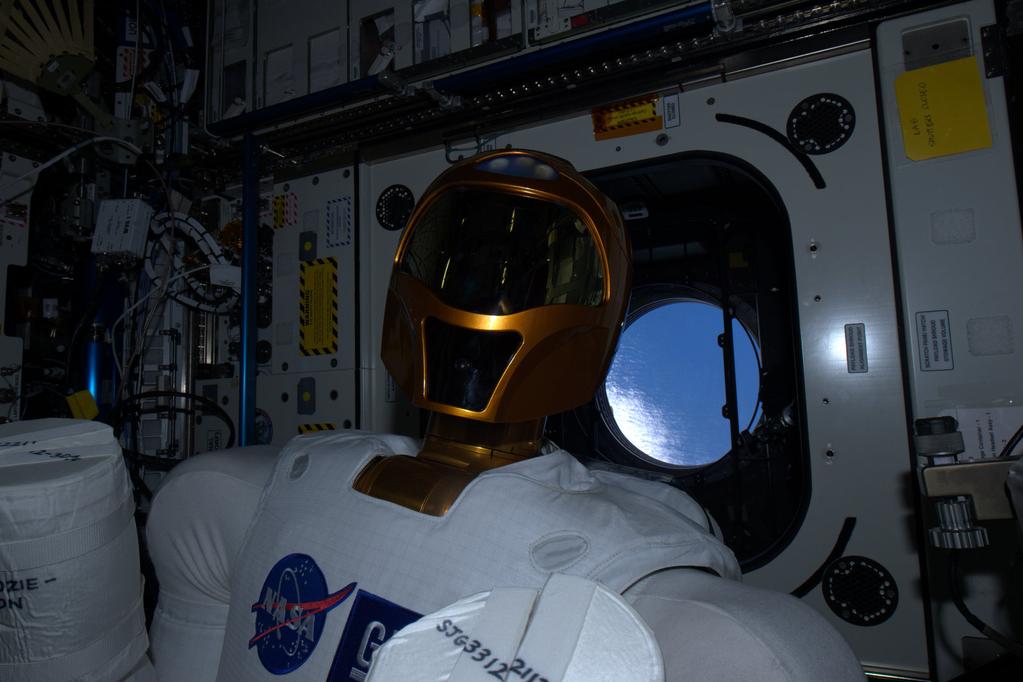
Thursday, July 9, 2015: NASA astronaut Scott Kelly tweeted this photo of Robonaut 2, taken on the International Space Station, July 7, 2015. He wrote: “#Robonaut and I are happy to hear you are discussing important @ISS_Research at #ISSRDC to improve life on Earth.” The ISSRDC hashtag refers to the ISS R&D Conference taking place in Boston, Massachusetts, July 7-9, 2015. Robonaut 2, NASA’s first humanoid robot in space, was recently named NASA Government Invention of the Year for 2014.
— Tom Chao
Hot Spots
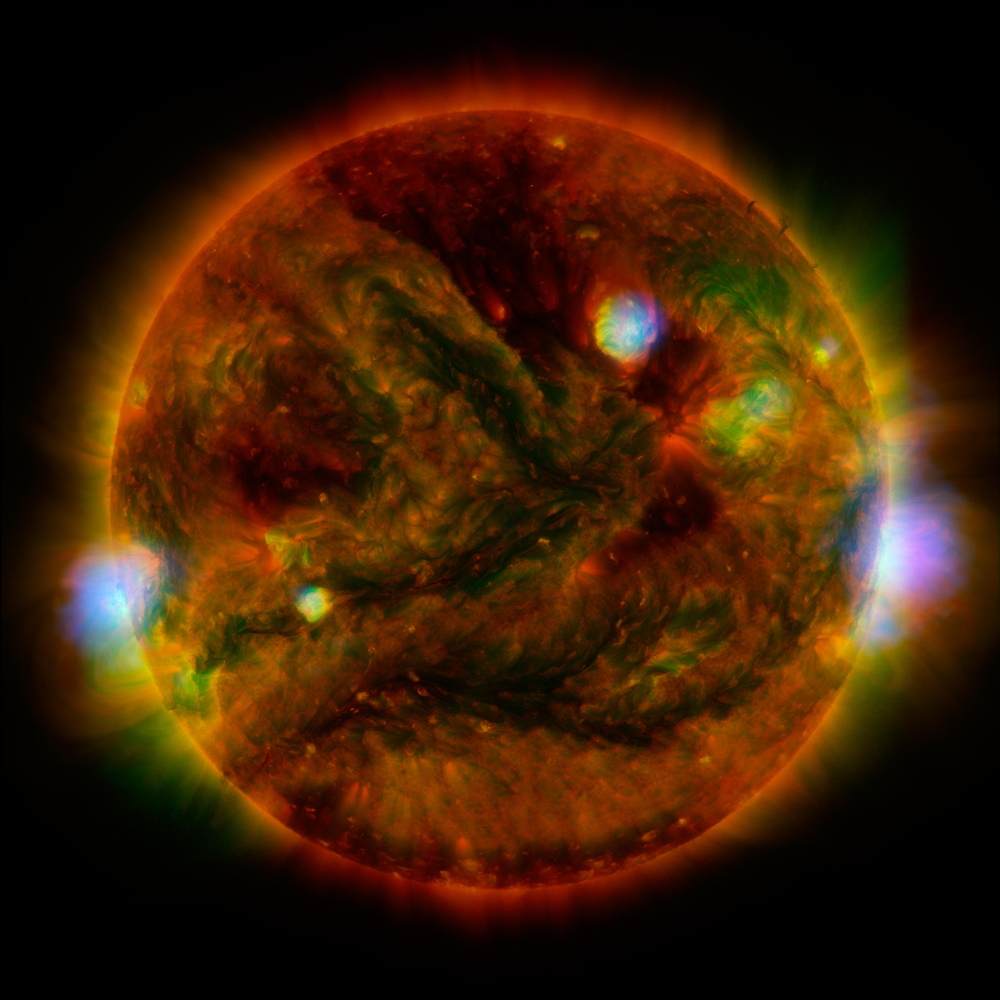
Friday, July 10, 2015: Observations from several telescopes combine to reveal flaring, active regions of the sun in this image. High-energy X-rays from NASA's Nuclear Spectroscopic Telescope Array (NuSTAR) appear in blue; low-energy X-rays from Japan's Hinode spacecraft shine in green; and extreme ultraviolet light from NASA's Solar Dynamics Observatory (SDO) glows yellow and red. The three spacecraft took these images at about the same time on April 29, 2015. The active regions on the sun’s surface contain material at a temperature of several millions of degrees. The blue-white areas showing the NuSTAR data identify the most energetic spots. NuSTAR usually looks deeper into the cosmos to observe X-rays from supernovas, black holes and other extreme objects. It can also look at the sun safely and capture images of high-energy X-rays with increased sensitivity over previous levels. Image released July 8, 2015.
— Tom Chao
Almost There
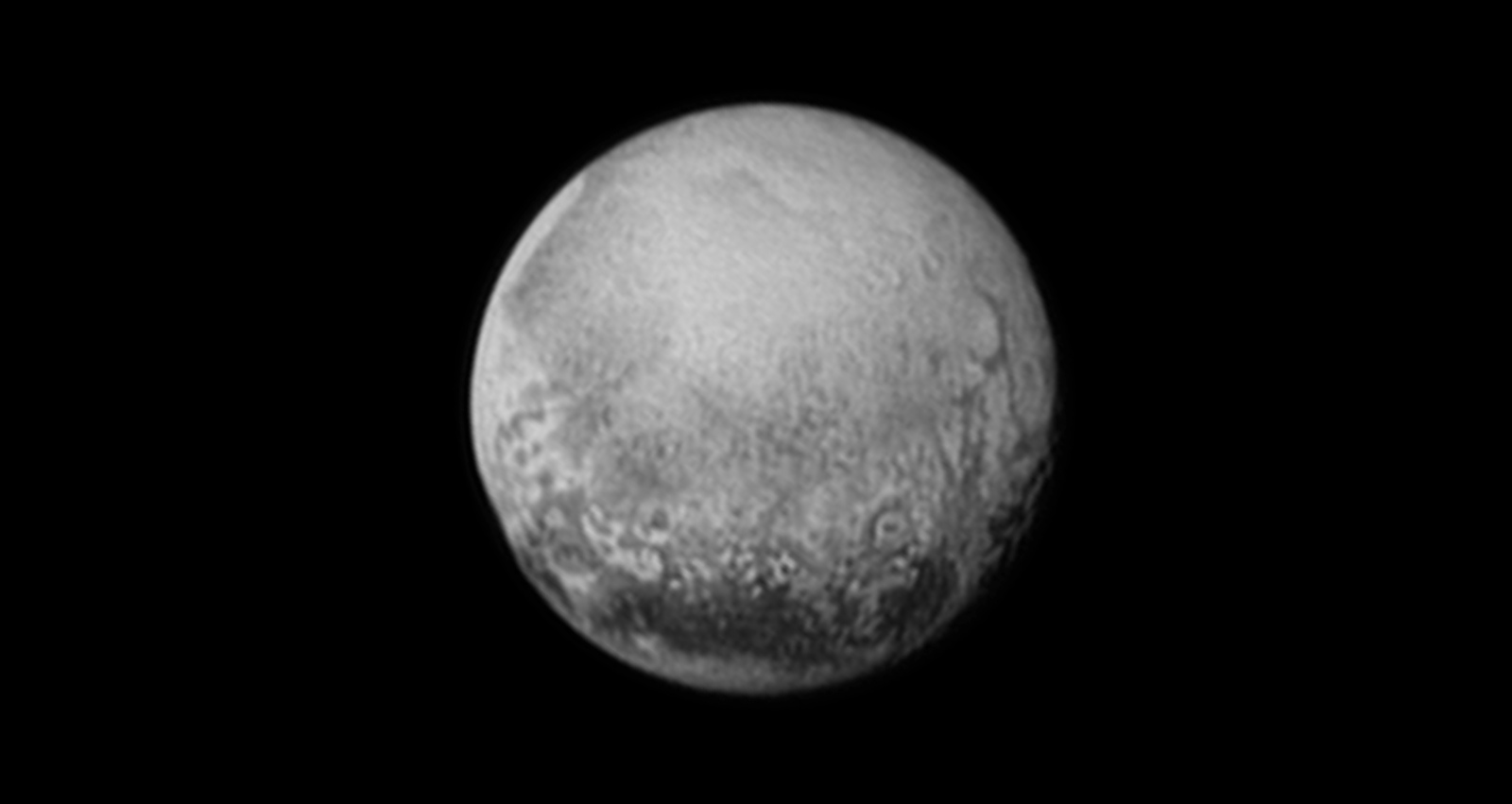
Monday, July 13, 2015: Tomorrow, July 14, 2015, New Horizons space probe will make its closest approach to dwarf planet Pluto at 7:49 AM EDT. This photo shows New Horizon’s view on July 11 of the mysterious former planet with unexplained dark spots visible. [See our Space.com complete coverage of the historic Pluto flyby.]
— Tom Chao
PLUTO NOT YET EXPLORED
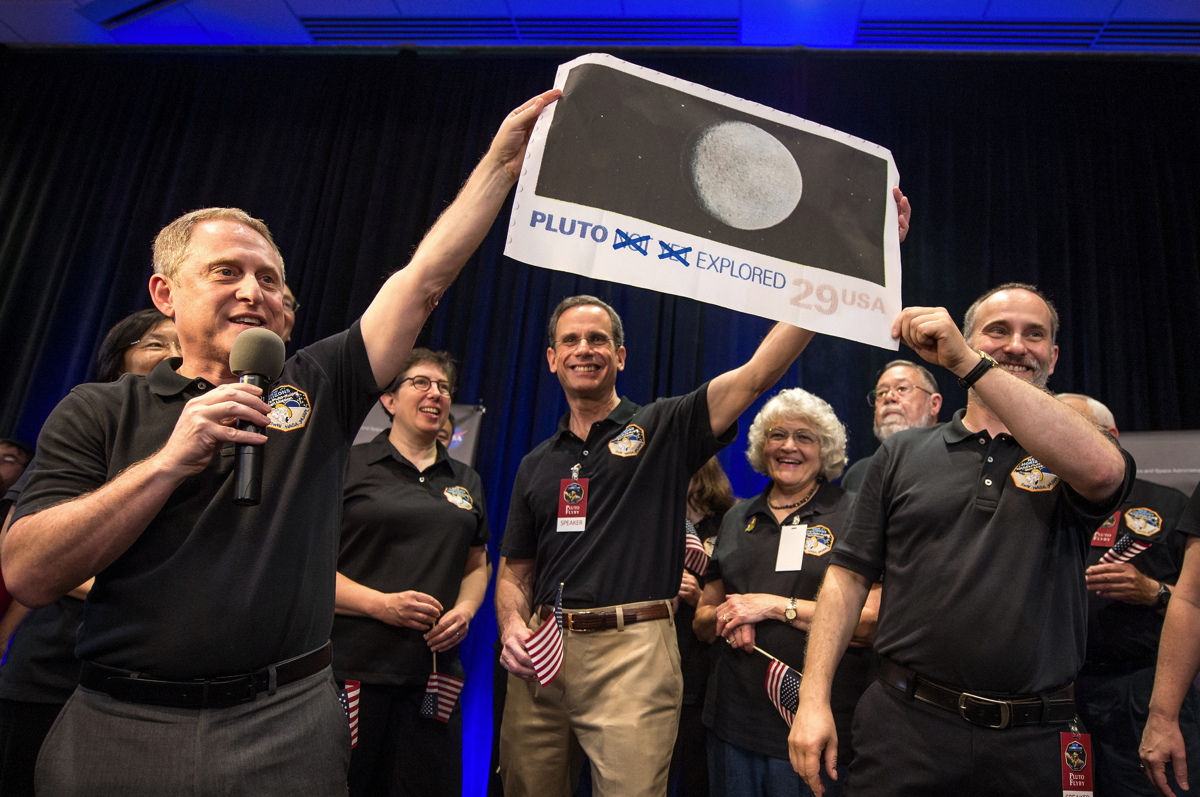
Tuesday, July 14, 2015: At the Johns Hopkins Applied Physics Laboratory in Laurel, Maryland, New Horizons Principal Investigator Alan Stern (left) and other researchers unveil a poster-size reproduction of a US Postal Service $0.29 stamp issued in 1991 showing Pluto with the words: PLUTO NOT YET EXPLORED. Here, the words "NOT YET" have been crossed out, to commemmorate the Pluto probe making its historic flyby moments before on 7:49 am (EDT), July 14, 2015. [Read our full story of the history of the no-longer accurate stamp.]
— Tom Chao
[Ed. note: Image updated 4;09 pm EDT.]
Join our Space Forums to keep talking space on the latest missions, night sky and more! And if you have a news tip, correction or comment, let us know at: community@space.com.










